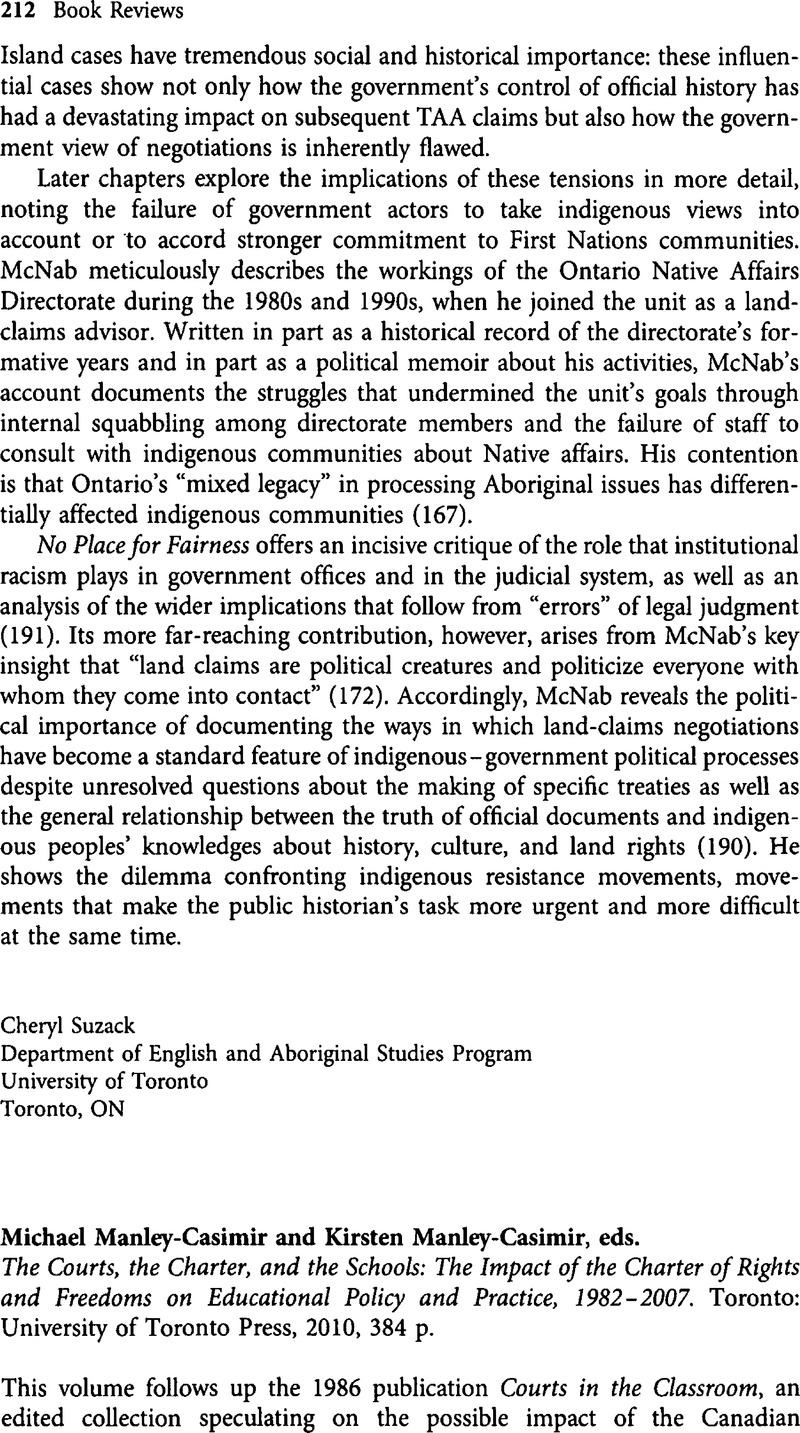No CrossRef data available.
Article contents
Michael Manley-Casimir and Kirsten Manley-Casimir, eds. The Courts, the Charter, and the Schools: The Impact of the Charter of Rights and Freedoms on Educational Policy and Practice, 1982-2007. Toronto: University of Toronto Press, 2010, 384 p.
Published online by Cambridge University Press: 02 January 2013
Abstract

- Type
- Book Reviews/Comptes-Rendus
- Information
- Canadian Journal of Law and Society / La Revue Canadienne Droit et Société , Volume 26 , Issue 1 , April 2011 , pp. 212 - 214
- Copyright
- Copyright © Canadian Law and Society Association 2011
References
4 Manley-Casimir, Michael E. and Sussel, Terri A., Courts in the Classroom: Education and the Charter of Rights and Freedoms (Calgary: Detselig Enterprises, 1986)Google Scholar.
5 Interestingly, the majority of the authors here are from the field of education rather than of law.
6 There are references to gender in the book, but they are very sparse and quite general; race is absent from the index, although hinted at in various places. Contributions that I hoped would develop some discussion of the racialized aspects of the phenomena discussed fail to do so. See, e.g., William Smith and William Foster, “Equality in the Schoolhouse: Has the Charter Made a Difference?” (p. 14), quoting a First Nations student commenting on lack of educational opportunity as constituting a form of genocide. Smith and Foster's piece focuses on disability—no doubt because they are looking at cases, and most of the cases relate to disability. Wayne McKay also uses disability as a case study in his contribution, “The Lighthouse of Equality: A Guide to ‘Inclusive’ Schooling” (p. 42), and his discussion of Multani v Commission scolaire Marguerite-Bourgeoys, 2006 SCC 6 at 56, does not explore race. I recognize the challenge—the lack of case law. However, I would have liked to see some discussion of why the Charter seems to speak to some dimensions of educational inequality but not others.
7 [1998] 3 SCR 393.
8 See Dickinson, Ailsa M. Watkinson, “Corporal Punishment and Education: Oh Canada! Spare Us!” (p. 181); Smith and Foster.




